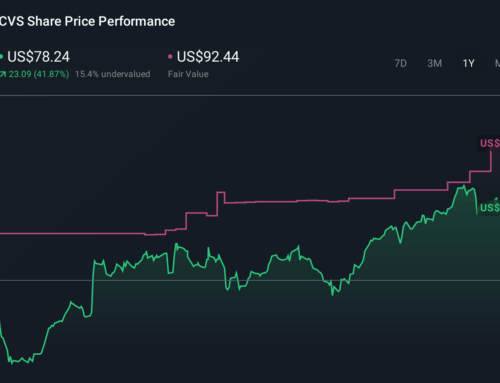Exploring Solar Options in Pennsylvania that Keep Farmland Safe
April 11, 2025
STATE COLLEGE, Pa. — Pennsylvania has a lot of gearing up to do if solar is going to produce 10% of its grid electricity by 2030.
That target recommended by the Department of Environmental Protection in a 2018 study would require more than 12 times the amount of grid energy produced by solar in the state today.
An April 2 tour of sites in Centre County showed several ways the industry can grow while being mindful of concerns such as losing farmland to solar arrays.
“It is really important to think how we want to balance all the uses,” said Franklin Egan, a trustee with the Centre County Farmland Trust and one the hosts of the tour organized by WeConservePA.
The tour explored three solar projects ranging from a small setup at a winery to a large array planned for more than 150 acres of farm and mountain land in Walker Township.
The University Area Joint Authority has used a medium-scale solar array at the site of its wastewater treatment plant for several years, said Cory Miller, executive director of the authority.
During a tour of the site, Miller said the solar arrays covering 26 acres save money for the authority, which can pass on the savings to residents.
“Generating our own energy is cheaper than buying it off the grid,” Miller said. “We wouldn’t do it if it wasn’t economically viable.”
Jason Wert, an engineer with Rettew, the firm that oversaw design and installation, said the solar arrays produce 50% to 70% of the facility’s electrical needs in the year.
During peak summer months, net metering allows the authority to send power to the grid, which is applied as credit during the months when it produces less.
The arrays were installed in two phases — in 2018 and 2021 — on land the authority had previously rented to a hay farmer. The land was “not the most productive” as a farm, Miller said.
The land still contributes to agriculture, as a local farmer brings up to 90 head of sheep to the site to graze among the solar panels during the growing season.
Miller said the sheep have eliminated the cost of mowing the site and the authority pays the farmer to graze his sheep there.
“It’s cheaper for us to have the sheep farmer do this,” he said. “Overall it’s a big win.”
Wert said local residents accepted the solar arrays without complaint. It helped that the authority is a nonprofit and that customers benefit from the savings.
Nearby neighbors were also glad the solar arrays preempted other kinds of development.
“They said, ‘We’d rather look at solar panels and sheep than houses,’” Miller said.
The panels rest on I-beams driven into the ground and held in place by friction without needing concrete, Wert said. The panels have a 25- to 30-year warranty and are expected to save $8 million to $10 million or more for the authority over 25 years, he said.
While the authority owns the first array outright, the second is in a public-private partnership, with the likelihood of the authority purchasing it within a few years, Miller said.
At 5 megawatts, the arrays produce the maximum amount Pennsylvania allows at a site for a public service solar project. However, Miller said the authority is eyeing some other land on the property for an additional array if the state would increase the limit.
Wert said Pennsylvania is “happily in the top 10 states” favorable to solar production.
That’s despite some policy limitations, which include the state not allowing community solar projects that small businesses could join in a cooperative agreement. Most states in the Mid-Atlantic allow it.
“Policy drives a lot of this conversation,” Wert said.
Big Plans
In a larger-scale project, the Centre County Solar Group is gearing up for an 18-megawatt solar array to go online by fall 2026, said Pam Adams, a sustainability planner for Centre Region Council of Governments.
The project, which will cover 150 to 200 acres of mountain and farmland in the Hublersburg area, is expected to provide 80% of the electrical needs for a number of municipal agencies in Centre County through a power purchase agreement.
Those agencies are the State College Area School District, State College Borough, State College Borough Water Authority, Centre County, Centre Region Council of Governments, College Township Water Authority, and Ferguson, Harris, Patton and College townships.
Adams said the project was inspired by a 70-megawatt system installed in 2019 by Penn State in Franklin County, where 150,000 ground-mounted solar panels on roughly 500 acres at three sites provide 25% of Penn State’s statewide electricity requirements through a power purchase agreement.
While about 75% of Pennsylvania’s solar power comes from smaller sources, large solar arrays that generate power for off-site entities through a power purchase agreement can exceed Pennsylvania’s 5-megawatt limit, Adams said.
“It can be very controversial,” she said of large-scale solar. “There’s a need to have conversations in our community about how it can work.”
Done right, solar can help farmers cut costs and provide supplemental income, she said. Developers pay a fixed price of $800-$1,400 per acre per year for 20 years or more.
According to the American Farmland Trust, of the more than 6,000 farms lost in Pennsylvania between 2012 and 2017, 70% of them are being converted to low-density residential development.
Adams believes solar can play a part in preserving more farms through the extra income it provides and by using the land for more than one purpose.
“We strongly support agrivoltaics so that there is dual use of the land — solar production and agriculture,” she said.
Downsides of solar on farmland include its potential to drive up farmland prices and adversely affect long-term land use and ecosystems.
An additional concern is what happens in 25 to 30 years when the solar panels have outlived their usefulness. Funds for dismantling the panels should be considered during the planning process, she said.
In this case, Adams said the township and developer have an agreement that requires a bond for the removal of all equipment and underground wiring or piping and land restoration cost.
The Centre County Solar Group project is expected to save its member entities about $4 million over 15 years, Adams said.
The project will offer members a set electric rate with a fixed 1.5% annual increase that aims to stay below the going rate.
Members will also have the option of purchasing renewable energy certificates, or RECs, to gain carbon reduction goals.
The solar developer who leases the farmland for the project accrues the RECs, which helps bring the price down for purchasers, Adams said.
Along with its recommendation of generating 10% of the state’s grid energy from solar by 2030, DEP’s study projects needing 80,000 acres of land to meet it.
That acreage need not be all farmland, Adams said, pointing out that abandoned mine lands are among the options being considered.
Solar-Powered Wine
At Happy Valley Winery, the sun’s role goes beyond growing the grapes. It also powers the facility where they turn the harvest into wine.
Tour guests had a chance to see the small-scale solar system that’s been helping make wine there since 2011.
Owners Elwin Stewart and Barb Christ, both professors emeritus of plant pathology at Penn State, explained the origins of their 10-acre vineyard and winery and how solar provides about 60% of its energy needs in a year.
Stewart said his interest in tapping the sun’s energy began decades ago when he still lived in his native Minnesota, where temperatures could get down to minus 40 degrees.
“I was always thinking about the power of the sun and how to capture that,” he said.
The couple decided to start a vineyard in 1999, selling grapes prior to getting into the winemaking business.
Around the same time, Stewart decided to install some early versions of solar panels.
“Many of our friends at the university were amused,” he said. “They said ‘the sun never shines here.’ But it does. And that first system did very well.”
Stewart estimates the newer solar panels installed on the roof of the winemaking building have saved $5,000 to $7,000 in electric costs over the past 14 years.
The winery also receives occasional checks for carbon credits that help the bottom line and go toward paying off the original cost of the solar setup.
Installed after the transition to winemaking in 2010, the newer panels have shown “vast improvements in efficiency” over the earlier versions, Stewart said. He expects the system to pay for itself at about 20 years of age.
Christ said the vineyard produces about 45 tons of more than 10 grape varieties annually.
The couple makes a variety of wines, from dry fruity whites to oaky full-bodied reds, and even a champagne-style made from Cayuga grapes. Their most popular is Appalachia Red, a sweet blend.
The tour was part of WeConservePA’s three-day Pennsylvania Land Conservation Conference covering a range of initiatives from farmland preservation to groundwater protection.
Search
RECENT PRESS RELEASES
Related Post


